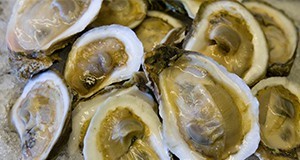Abstract
Vibrio parahaemolyticus is a naturally occurring bacterium that inhabits coastal brackish marine waters throughout the world and is commonly found in the United States and Canada. If ingested in sufficient numbers, this bacterium can cause illness such as gastroenteritis with symptoms such as cramps, vomiting, and nausea. Illnesses linked with this organism are usually associated with the consumption of raw or improperly cooked seafood, particularly raw oysters. This 3-page fact sheet is a major revision that discusses Vibrio parahaemolyticus, illness caused by the bacterium, factors that increase risk of infection, methods of infection, seafood and shellfish handling recommendations, and prevention. Written by Anita C. Wright, Renée M. Goodrich, Michael A. Hubbard, and Keith R. Schneider, and published by the UF Department of Food Science and Human Nutrition. Original publication date: July 2009. Revised: October 2015.
FSHN0901/FS146: Preventing Foodborne and Non-foodborne Illness: Vibrio parahaemolyticus (ufl.edu)
References
DHS Oregon. Oregon Department of Human Services. Retrieved March 31, 2009 from http://www.dhs.state.or.us/publichealth/acd/vibrio/facts.cfm. Now available at https://www.oregon.gov/oha/PH/DISEASESCONDITIONS/DISEASESAZ/Pages/vibrio.aspx.
Florida Department of Agriculture and Consumer Services [FDACS] n.d. Shellfish. Retrieved September 3, 2015 from http://www.freshfromflorida.com/Divisions-Offices/Aquaculture/Agriculture-Industry/Shellfish
Food and Drug Administration [FDA]. n.d. Food Code 2013. Retrieved September 3, 2015 from http://www.fda.gov/Food/GuidanceRegulation/RetailFoodProtection/FoodCode/ucm374275.htm.
Food and Drug Administration [FDA]. n.d. Seafood HACCP. Retrieved September 3, 2015 from http://www.fda.gov/Food/GuidanceRegulation/HACCP/ucm2006764.htm.
Mariott, N.G. and Gravani, R.B. 2006. Principles of Food Sanitation: 5th Edition. Springer, New York, NY. https://doi.org/10.1111/j.1541-4329.2006.00004.x
Murano, Peter S. 2003. Understanding Food Science and Technology, 305-314. Belmont, CA: Thomson Wadsworth.
Minnesota Department of Agriculture. n.d. Employee Personal Hygiene. Retrieved September 3, 2015 from https://www.mda.state.mn.us/food-feed/employee-personal-hygiene.
Minnesota Department of Agriculture. n.d. Potentially Hazardous Foods. Retrieved September 3, 2015 from https://www.mda.state.mn.us/food-feed/potentially-hazardous-foods.
Schneider, K.R., Silverberg, R., Chang, A. and Goodrich-Schneider, R.M. 2014. Preventing Foodborne Illness: Clostridium botulinum. FSHN0406. Gainesville: University of Florida Institute of Food and Agricultural Sciences. Retrieved September 3, 2015 from http://edis.ifas.ufl.edu/FS104.


